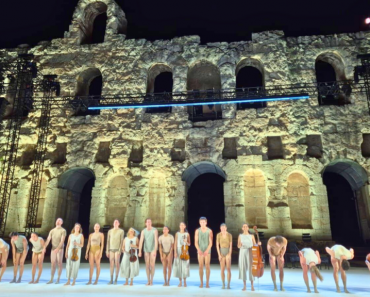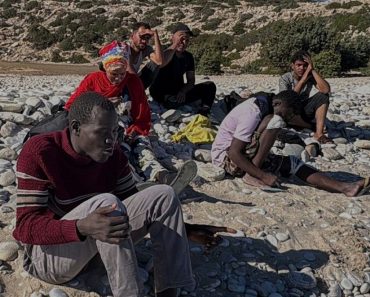Hello from Wonder Media Network. I’m Jenny Kaplan and this
is Wamanica. This month, we’re talking about outsiders, women who
marched to the beat of their own drum and rejected
stereotypes about what women should be. Their aesthetic pioneers, norm benders,
and often one of the only women in their field. Today,
we’re talking about a musician whose singular, shocking and sometimes
(00:26):
downright satanic vocal style has captivated fans and critics alike
for decades. Through her music, she seeks to give voice
to the suffering of marginalized groups throughout history. Let’s talk
about Diamanda Gallis. Diamanda was born in San Diego in
(00:46):
nineteen fifty five to Greek parents. Growing up, she studied piano,
demonstrating a gift for music from an early age. She
was also exposed to a lot of different musical styles
in her youth, traditional Greek music for her parents, Mexican
music on the local radio, classical and jazz and music
(01:06):
classes at school. She sang with her father’s gospel choir
and played with various musical groups in her teen years,
including a New Orleans style jazz band and the San
Diego Symphony. This was also when she started singing, coaching
herself to develop her range and power as a singer,
Her voice, with its impressively wide range and eerie, devilish quality,
(01:27):
became Diamanda’s calling card. In nineteen eighty two, she released
her first album, Litany’s of Satan. It features Diamanda’s haunting,
sometimes downright terrifying vocal performance of French poet Charles Baudelaire’s
work of the same name. The sonic landscape of the
album is filled with hellish screeches, distorted in demonic voices,
(01:50):
and desolate moans and groans. The record was allegedly recorded
by a sleep deprived Diamanda in a freezing cold London
basement studio. The result maybe not an album that you
typically put on in the car on your morning commute,
(02:11):
but certainly a record with a unique power to provoke.
In fact, provocation was one of Diamanda’s other core talents
as an artist. The nineteen eighties was the era of
Satanic panic in America, and Diamanda’s devilish musical stylings were
quick to spark outrage with Christian pundits. Her vampy visual aesthetic,
(02:33):
long black hair sharply carved cheekbones, thickly lined eyes, and
blood red lips added to the picture. But she also
found plenty of fans who resonated with her raw emotive
in totally distinct style, and Diamanda’s in your face music
and persona weren’t just a means to stir up public controversy.
Her records tackled real world problems. In the late nineteen eighties,
(02:57):
she created a trilogy of works known as The Mask
of the Red Death. These records showcased her outrage and
despair over the government’s treatment of the thousands of people
dying of AIDS. Her passion came from a deeply personal place.
Both her brother and a close friend had died during
the AIDS epidemic. Diamanda railed against Catholic religious leaders who
(03:19):
opposed safe sex education, and was arrested at a die
in protest at Saint Patrick’s Cathedral in New York in
nineteen eighty nine. The next year, she performed her record
Plague Mass at the Episcopalian Cathedral of Saint John the Divine,
dousing her naked torso and blood during the live show.
The spectacle was meant to confront as Diamanda put it,
(03:42):
those who’ve twisted Christ’s teaching into socially sanctioned condemnation of
sexual difference. This impassioned form of musical political commentary remained
a feature of Diamanda’s work throughout her career. She would
go on to cover a range of heavy topics in
her albums, sexual assault, revenge, killing, mental illness, and genocide.
(04:04):
Defining Diamanda’s music by genre is a fruitless task. Her
influences are simply too vast and interwoven. The sonic landscapes
she creates often find inspiration in Middle Eastern and Eastern
European musical traditions, even when she’s covering well known tracks
like Billie Holliday’s Gloomy Sunday or Nina Simone’s I Put
a Spell on You. Her eccentric style transformed the familiar
(04:26):
into the other worldly. Language is also vital for Diamanda’s process.
She prefers to make her own translations when adapting a
poet’s work for her music, ensuring a rich understanding and
connection with the original text. She especially loves to sing
in Greek, the language of her family and ancestors. Her
singing voice in its squealing harshness, its powerful boom, its
(04:49):
quivering high notes, seems to directly channel the suffering of
the marginalized and forgotten voices. Diamanda seeks to highlight in
her work. As she explained, i’ addressing the same thing
over and over again, the issue of a person who
is isolated from society Today, Diamanda continues to make music.
(05:10):
In twenty twenty two, she released Broken Gargoyles, inspired by
German poet gay Or Chime and the German soldiers who
were ostracized after returning from World War One. She’s also
recently released recordings of live performances and remastered versions of
older works. Deamanda remains committed to bucking convention, resisting fixed definition,
(05:30):
and giving a haunting and visceral voice to those often
denied one at all. All month, We’re talking about Outsiders.
For more information, find us on Facebook and Instagram at
Wamanica podcast special thanks to Liz Kaplan, my favorite sister
and co creator. Talk to you tomorrow.







